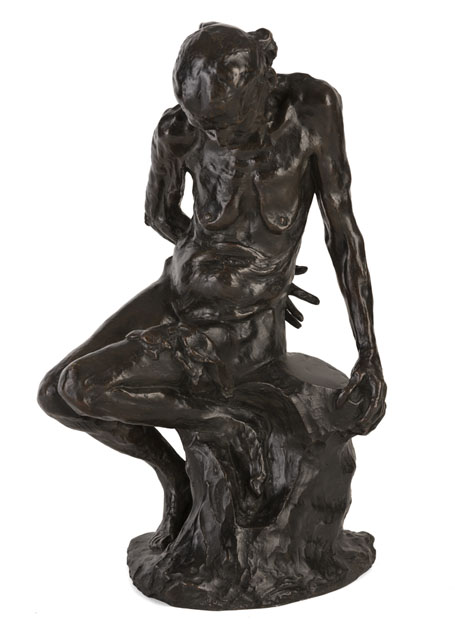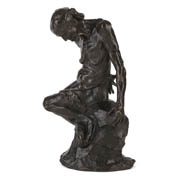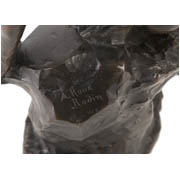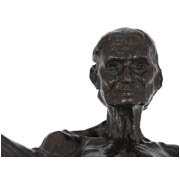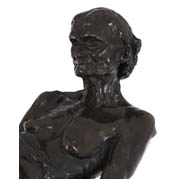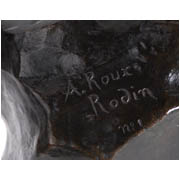Details
- Object type
figure
- Title
She Who Was the Helmet Maker’s Once-Beautiful Wife
- Artist/Maker
- Place Associated
France (place of manufacture)
- Date
1885-7
- Materials
bronze
- Dimensions
overall: 505 mm x 320 mm x 235 mm 15900 g
- Description
-
The model for this sculpture was an elderly Italian woman called Maria Caira. The nature of her acquaintance with Rodin has been suggested to have originated in slightly different ways: an early, romantic theory suggests that Caira was extremely old and poverty stricken, on the search for her long-lost son, and reduced to the indignity of seeking work as a nude model. In a variation of this theory, the writer Mirbeau claims that Caira’s son pressured her pose in the nude. Caira was also the model for Misery (c.1887) by the sculptor Jules Desbois, who later wrote that Rodin asked for Caira’s address when he saw the recently-completed Misery. The model, Desbois explained, was part of a family of professional models.
However Rodin met Caira, his unforgettable exploration into the aged female form originated around 1884 as a group featuring upon the left-hand side in the Gates of Hell, the artist’s monumental, sculptural door intended for a Parisian decorative arts museum that never came to be.
Originally entitled ‘Old Woman’, in 1891 the sculpture came to be known after a poem by the 15th century writer, François Villon, ‘Ballade de la Belle Heaulmière aux filles de joie (c.1461).’ The theme of aging bodies evidently intrigued Rodin and his close contemporaries; as well as Misery, in 1887 Desbois worked with Rodin while at the Sèvre porcelain factory to produce Limbo and the Sirens, the design of which featured an aged woman pictured alongside a child and a young woman. Furthermore, Rodin’s lover, the sculptress Camille Claudel, was inspired to produce Clotho in 1893, her own remarkable rendering of aged womanhood.
Although it is tempting to read a deeper symbolism related to ‘momento mori’, a trope used for centuries by artists to refer to the transience of life, this sculpture can be regarded as a study from life in its own right, revealing Rodin’s fascination with flesh and form. It was produced at a time of the artist’s intense study into the human form, alongside his extensive project, ‘The Burghers of Calais’, which involved close study of nude figures.
Although held up as a masterpiece by critics and artists from Kenneth Clark to Henry Moore, Rodin’s frank depiction of the aging body was not universally loved. Luxembourg Museum purchased a cast in 1892. 20 years later, and visitors were still avoiding this “marvellous model of horror”. It was described in a 1916 edition of the critical American journal ‘Art World’ as “absolutely degenerate”. Offending sensibilities did not concern Rodin, however. It was his belief that, “in Art, only what has character is beautiful. Character is the intense truth of any natural spectacle, whether beautiful or ugly… And what is regarded as ugly in Nature often shows more character than what is described as beautiful… For the artist worthy of this name, everything is beautiful in Nature.’
- Credit Line/Donor
Gifted by Sir William and Lady Burrell to the City of Glasgow, 1944
- Collection
Burrell Collection: European Statuary Bronzes
- ID Number
7.7
- Location
Burrell Collection
